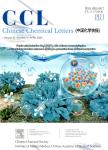Detection of avian influenza virus H9N_(2) based on self-driving and self-sensing microcantilever piezoelectric sensor
作者机构:College of Chemistry and Chemical EngineeringYangzhou UniversityYangzhou 225002China
出 版 物:《Chinese Chemical Letters》 (中国化学快报(英文版))
年 卷 期:2023年第34卷第4期
页 面:464-468页
核心收录:
学科分类:0831[工学-生物医学工程(可授工学、理学、医学学位)] 080202[工学-机械电子工程] 08[工学] 0802[工学-机械工程] 0836[工学-生物工程]
基 金:the financial support from National Natural Science Foundation of China (No. 22102141) the Priority Academic Program Development of Jiangsu Higher Education Institutions (PAPD) Nature Science Foundation of Jiangsu Province No.BK20190905 Project for Science and Technology of Yangzhou(No. YZ2020067) the open funds of the Ministry of Education Key Lab for Avian Preventive Medicine (No. YF202020)
主 题:Micro cantilever sensor Self-driving Self-sensing Piezoelectric material Avian influenza virus H9N_(2)
摘 要:In this article, we used the self-excitation and self-inductance characteristics of polyvinylidene fluoride(PVDF) piezoelectric materials, combined with the powerful signal processing and calculation analysis capabilities of integrated circuits, for the first time to explore a set of microcantilever sensor readout system without additional driver(self-driving) and can realize self-sensing external signal(self-sensing).It was successfully applied to the unlabeled detection of avian influenza virus(AIV) H9N_(2). The specific force of the antigen-antibody complexes on the surface of the microcantilever leads to the change of the stress of the cantilever, which drives the constructed detection device, and does not require an additional excitation source to drive it, that is, the self-driving part. At the same time, due to the movement of piezoelectric charges in the film caused by the positive piezoelectric effect of the PVDF film, self-inductive charges are generated on the surface of the sensor dielectric. The charge signal is converted into a voltage signal, and the sensing part is completed, that is, self-sensing. The immunosensor has a linear range of100-1000 ng/m L with a detection limit of 2.9 ng/m L. The method will also open up a new avenue for the detection of other analytes based on antigen-antibody responses.



